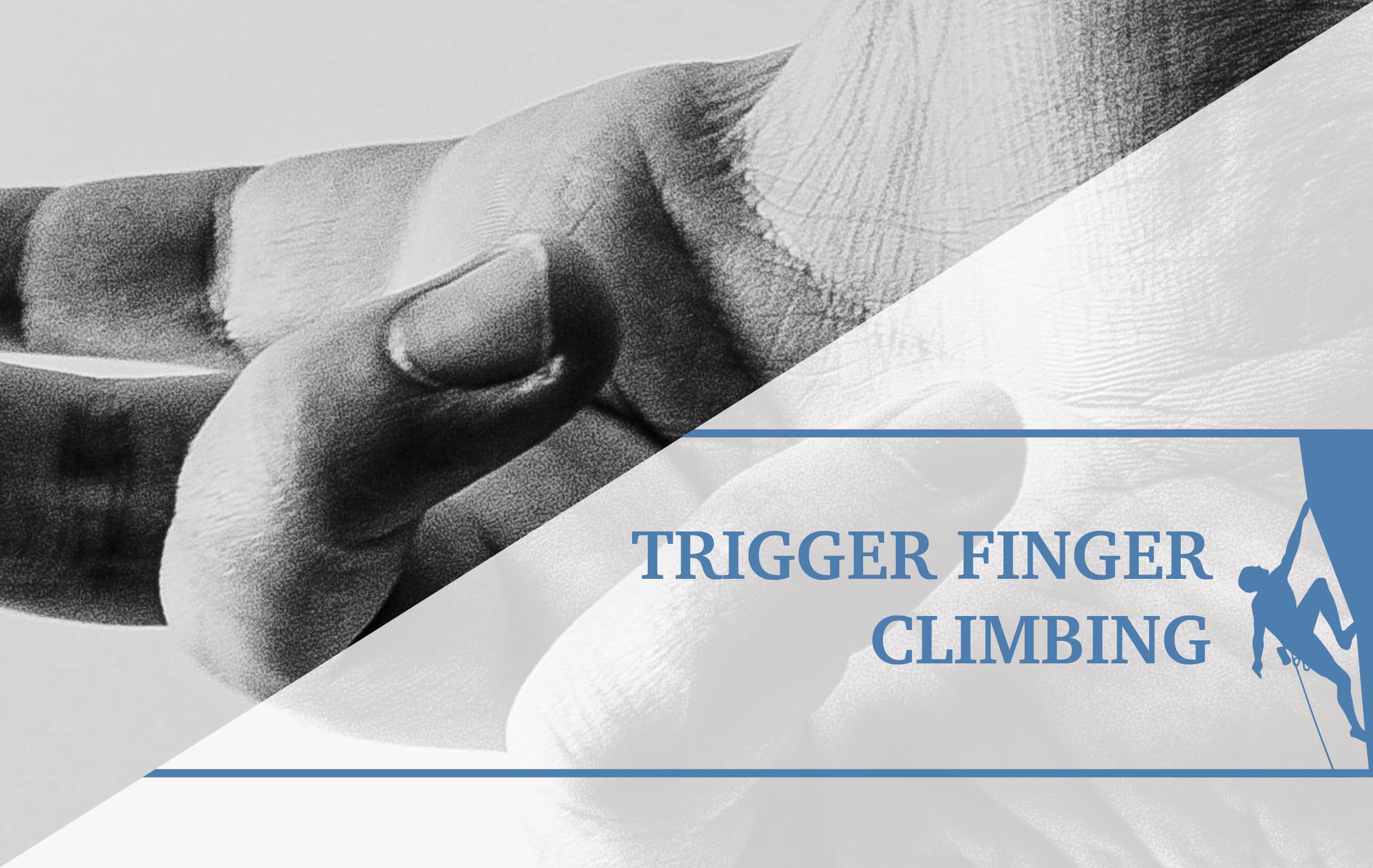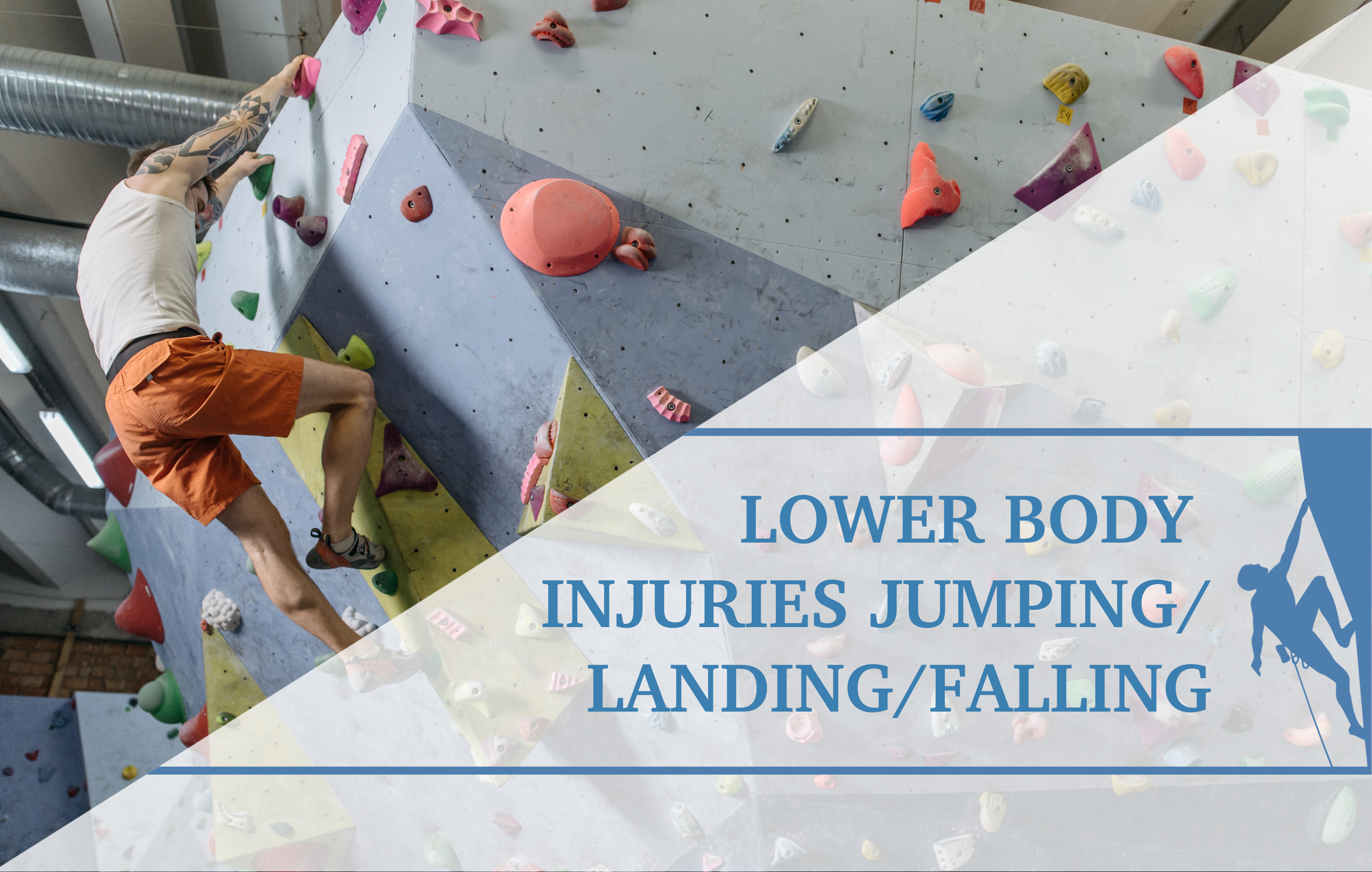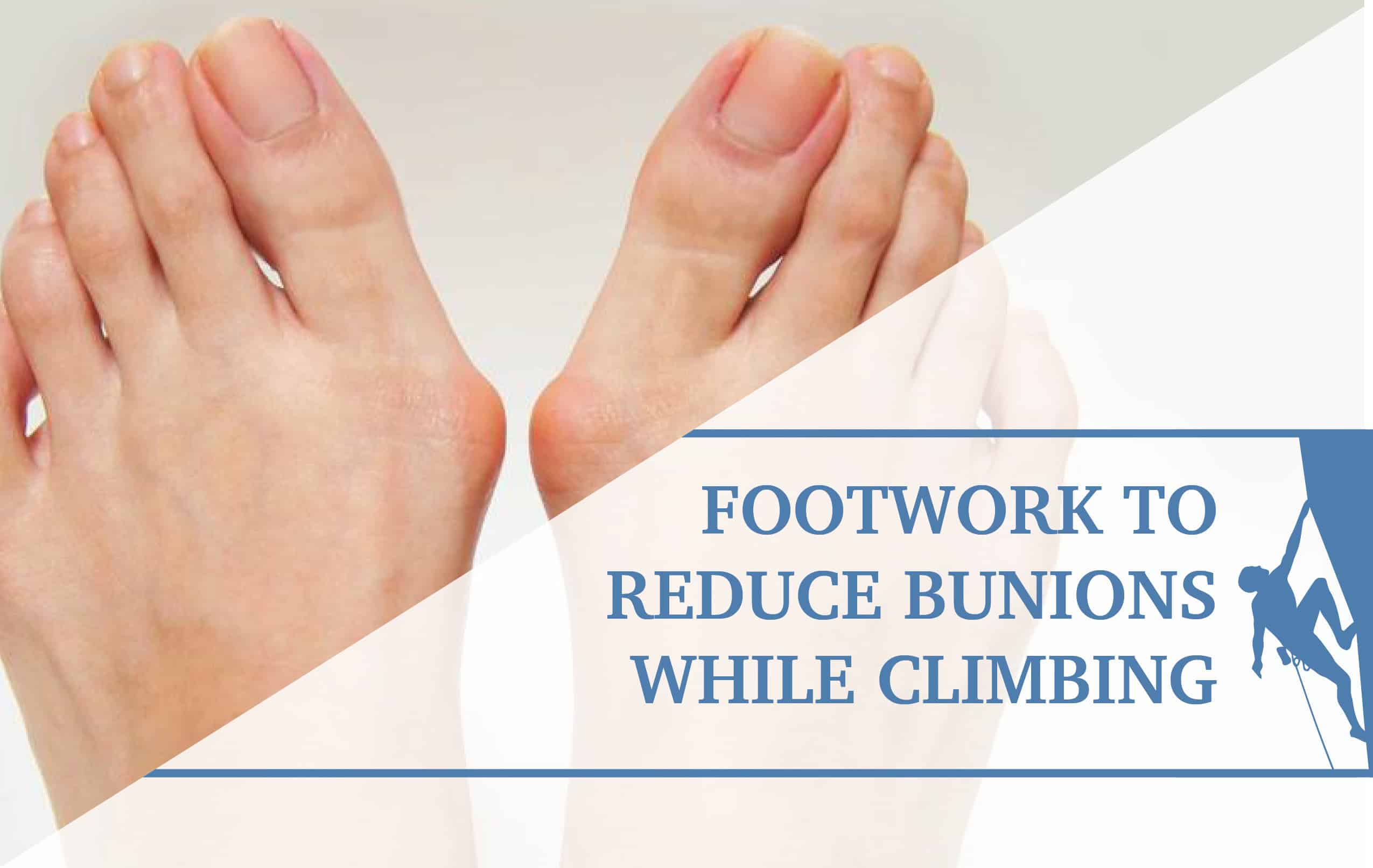Not Your Average Climber: How Climbing impacts Parkinson’s and Cerebral Palsy
Rock climbing is a sport which can be enjoyed by people of all ages and walks of life. The sport is continuing to grow in popularity, as shown by its Olympic debut, and research on climbing has surged. Recent research has been published on the application of rock climbing as an effective and safe treatment for a variety of conditions. Parkinson’s Disease and Cerebral Palsy are two of these conditions that have had a recent rise in the research. Parkinson’s is the second most common neurodegenerative disease behind Alzheimer’s and is seen as the fastest growing, with nearly 1 million people diagnosed in the United States.1
Cerebral Palsy is the most common motor disability in childhood with an estimated 1-4 diagnoses per 1000 children.2-3
With such a high prevalence, new treatment methods are always sought after by physical therapists. In this article the research on the effects of rock climbing on these conditions will be examined and an example treatment will be presented.
What is Parkinson’s Disease?
Parkinson’s Disease (PD) is a progressive neurodegenerative disorder that affects the dopamine system of the basal ganglia in the brain. Parkinson’s is typically associated with the pill-rolling tremor, but it affects all aspects of movement. Patients with PD have smaller and slower movements (bradykinesia), muscle rigidity, and impaired postural stability. Parkinson’s is also associated with non-motor symptoms including depression and cognitive impairments.
Parkinson’s is typically treated with medication and physical therapy to slow the progression of the disease and improve quality of life. Levodopa is a medication that increases the amount of dopamine able to enter the brain, thus reducing symptoms. The main component of PD treatment is exercise. Physical Therapists develop specific treatment programs with a four-pillar framework consisting of unloading, mobility, strength, and movement exercises. The clinical practice guideline recommends aerobic exercise, resistance training, balance training, flexibility, external cueing and community-based exercises as important components to implement into the plan of care for a patient with PD.
In the treatment of these patients, research has supported novel and fun ideas to keep participants engaged and motivated. Some of these neoteric treatment methods include:
- LSVT BIG
- Boxing
- Ballroom dancing
- Yoga
- Tai Chi
LSVT-BIG is an exercise program that certified Physical Therapists can use for improving the amplitude of their patient’s movements. The exercises include sitting & reaching, stepping in all directions, and rocking and twisting. There have been numerous clinical trials evaluating the effectiveness and feasibility of LSVT-BIG as a treatment method that showed improvements in motor function and quality of life in the participants.4-6
The main characteristic of this exercise program is big movements, with constant cueing and feedback to alter the individual’s perception of their movements. The exercises include large, reaching movements with external cueing, similar to the large reaching movements for a colored hold on the rock wall.
What is Cerebral Palsy?
Cerebral Palsy (CP) is described as a non-progressive impairment of motor control caused by an injury to the brain that occurred under 5 years of age.7
People with CP present in different ways depending on the location and severity of the brain injury. Patients with CP often have increased muscle tone (hypertonicity) and rigidity affecting one or many areas of their body.
Cerebral Palsy is not a condition that can be treated or reversed by medications. Cerebral Palsy is managed with care from a physical therapist to allow patients to maintain their functional ability as they grow and have changes in life demands. Physical Therapy for a patient with CP promotes flexibility and strengthening along with functional training.
How can Rock Climbing help?
New and upcoming research has shown that rock climbing has a positive impact on the symptoms of both Parkinson’s and Cerebral Palsy.
Parkinson’s Disease
The main aspects of current Parkinson’s treatment methods revolve around one main idea: movement. PD patients have difficulty linking the intent to move with actual movement. Rock climbing is a whole body workout that strengthens mind-body connections. Cardiovascular, strength, balance, flexibility are the 4 main exercise benefits that climbing provides that makes it so special for this population. Overall, the research has shown positive outcomes for the participants. Some examples of this are explained below.
One recent study demonstrated that climbing is effective at improving Parkinson’s patients mobility, functional ability, and quality of life.8
The results showed that a 6 week climbing program had a statistically significant improvement of rigidity, bradykinesia, and tremors. Over half of the participants continued climbing after the conclusion of the study.
Molly Donelan is a climbing instructor at Sportrock Climbing Center in Virginia.9
Over the past 8 years, she has directly seen the benefits that climbing has on the movement ability and state of mind of the participants that she leads. She explained that climbing has “cardiovascular, strength, balance, and stretching making it especially ideal for this population.” The climbers challenge themselves to outdo themselves and their peers and each see personal improvements with each send.
Cerebral Palsy
Though Cerebral Palsy begins in childhood, the effects are life-long. New research has shown that climbing is able to improve motor ability and movement confidence in both children and adults with cerebral palsy.
One study looked at the effects of climbing on a group of 11 adolescents aged 11-13 compared to a group of similarly-aged, typically developing peers. The study found that rock climbing is a possible “setting for peer socialization as a motivating and effective training alternative in children with CP10” The participants with cerebral palsy improved motor capability and motor control after taking part in a 3 week rock climbing curriculum. Another similar study showed significant improvements in grip strength, postural control, functional mobility, and spasticity in a group of 7 climbers with Cerebral Palsy.
Is it safe?
With the use of top ropes and knowledgeable professionals, the sport has been shown to be safe and has not been correlated with negative outcomes. For people with cerebral palsy, it’s equally as safe as for any other climber. They are not at risk for falls and are not associated with cardiovascular problems. For climbers with Parkinson’s there is more risk involved. These people are typically older, at high risk for falls, and are likely to have cardiovascular problems that can put them at even greater risk for falls. As Molly described, the greatest difficulty is getting them to the mat and lowering them down the wall. However, she did not describe any injuries to her climbers while they were clipped in and climbing. Experienced and vocal belayers are essential to keeping participants safe on the wall.
A proposed protocol
A program for Cerebral Palsy participants needs to involve strength and flexibility training that is engaging for a younger audience.
Warm up:
- A beneficial warm up should implement big movements to loosen up the muscles and increase the heart rate. Some possible warm ups could include: playing catch with a ball, jogging in place, and jumping jacks.
On the wall:
- For on the wall training, the exercises should be fun, motivating, and challenging. A program for people with cerebral palsy could include games, such as add-on, and incorporate reaching movements that promote flexibility. The activities should include engaging with peers. The progress can be recorded by the grade of route climbed, the quality of the climbing, and/or the amount of routes climbed to ensure advancements are being made.
Off the wall:
- After climbing, the participants can do cool down exercises such as dead hangs on the bar or static stretching to continue to promote flexibility. The participants may benefit from talking about how they did that day and what their goals are for next time to boost motivation and adherence.
A program for Parkinson’s participants needs to be engaging and motivating and incorporate big, reaching movements, strength, and external cueing.
Warm-up:
- A warm up for Parkinson’s participants needs to be on the mat to minimize the risk of injury from a fall. Vitals should be assessed before beginning exercises. This can be done by using a smart watch, and should be monitored throughout the entire work-out to ensure cardiovascular goals are being reached.
On the wall:
- On the wall training should be done tied into a top rope and can consist of having the participants reach for specific holds and climbing at an intensity that will promote strength gains or maintenance. The heart rate should be continually assessed throughout the climb. The progress can be recorded by the quality of the climb and grade of the route. Some tactics that can be utilized on the wall include:
- Clearly communicating with the participants
- Using a laser pointer to indicate specific holds
- Using a side climber
Patience
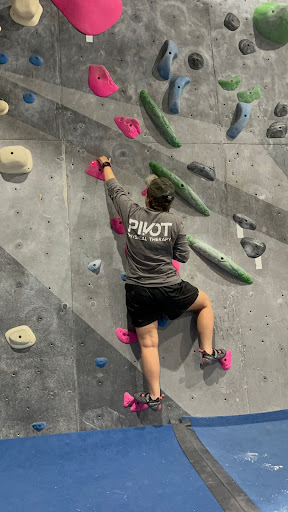
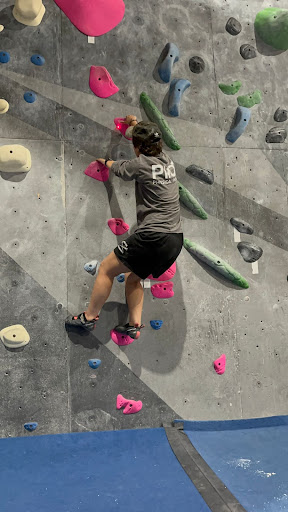
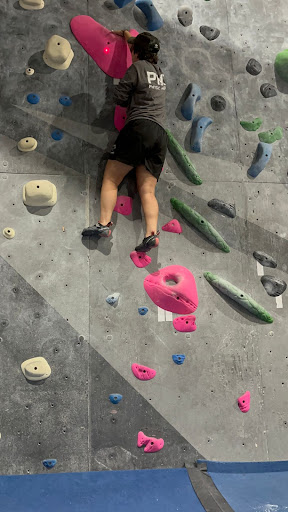
Off the wall:
- After climbing, it’s important to monitor the participants and ensure they get an appropriate amount of time to rest and cool down prior to leaving the gym. Falls are more likely to occur when the participants are tired and less focused on their movements. Static stretching can be done as a group while communicating feedback on the session to rest and boost motivation for the next meeting.
Learn more
Research has shown the best thing to do is to keep active and keep moving. If you or your loved one has been diagnosed with Parkinson’s or CP, reach out to your Physical Therapist to get in touch with a specialist to see if rock climbing may be an appropriate treatment for you.
Summary
Parkinson’s is a progressive neurodegenerative disease that causes rigidity and difficulty initiating movements. Parkinson’s is more common in older adults. Cerebral Palsy is a non-progressive disorder that can cause rigidity and increased muscle tone. CP is diagnosed in children and has life-long effects. Research has shown that climbing is effective at reducing symptoms and improving quality of life in both of these conditions.
About the Author
Caitlyn Wilkerson is a Physical Therapy student at University of Central Florida. They have a passion for climbing and hope to use the wall as a tool to prevent and treat injuries in climbers and non-climbers alike.
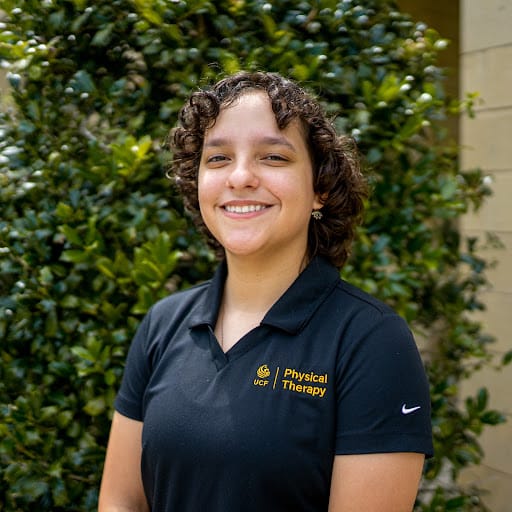
References
- Marras C, Beck JC, Bower JH, et al. Prevalence of Parkinson’s disease across North America. NPJ Parkinsons Dis. 2018;4:21. doi:10.1038/s41531-018-0058-0
- CDC. Data and Statistics for Cerebral Palsy | CDC. Centers for Disease Control and Prevention. Published December 30, 2020. Accessed February 16, 2022. https://www.cdc.gov/ncbddd/cp/data.html
- Sellier. Decreasing prevalence in cerebral palsy: a multi‐site European population‐based study, 1980 to 2003 – Sellier – 2016 – Developmental Medicine & Child Neurology – Wiley Online Library. Accessed February 16, 2022. https://onlinelibrary.wiley.com/doi/10.1111/dmcn.12865
- Ebersbach G, Grust U, Ebersbach A, Wegner B, Gandor F, Kühn AA. Amplitude-oriented exercise in Parkinson’s disease: a randomized study comparing LSVT-BIG and a short training protocol. J Neural Transm (Vienna). 2015;122(2):253-256. doi:10.1007/s00702-014-1245-8
- Farley BG, Koshland GF. Training BIG to move faster: the application of the speed-amplitude relation as a rehabilitation strategy for people with Parkinson’s disease. Exp Brain Res. 2005;167(3):462-467. doi:10.1007/s00221-005-0179-7
- Peterka M, Odorfer T, Schwab M, Volkmann J, Zeller D. LSVT-BIG therapy in Parkinson’s disease: physiological evidence for proprioceptive recalibration. BMC Neurol. 2020;20:276. doi:10.1186/s12883-020-01858-2
- Koman LA, Smith BP, Shilt JS. Cerebral palsy. The Lancet. 2004;363(9421):1619-1631. doi:10.1016/S0140-6736(04)16207-7
- Langer A, Hasenauer S, Flotz A, et al. A randomised controlled trial on effectiveness and feasibility of sport climbing in Parkinson’s disease. NPJ Parkinsons Dis. 2021;7:49. doi:10.1038/s41531-021-00193-8
- Donelan M. Learning to Soar – How Climbing Can Help People With Parkinson’s. Larson Sports and Orthopaedics. Published March 21, 2021. Accessed January 18, 2022. https://larsonsportsortho.com/climbing-with-parkinsons-disease/
- Schram Christensen M, Jensen T, Voigt CB, Nielsen JB, Lorentzen J. To be active through indoor-climbing: an exploratory feasibility study in a group of children with cerebral palsy and typically developing children. BMC Neurol. 2017;17:112. doi:10.1186/s12883-017-0889-z
- Disclaimer – The content here is designed for information & education purposes only and the content is not intended for medical advice.


